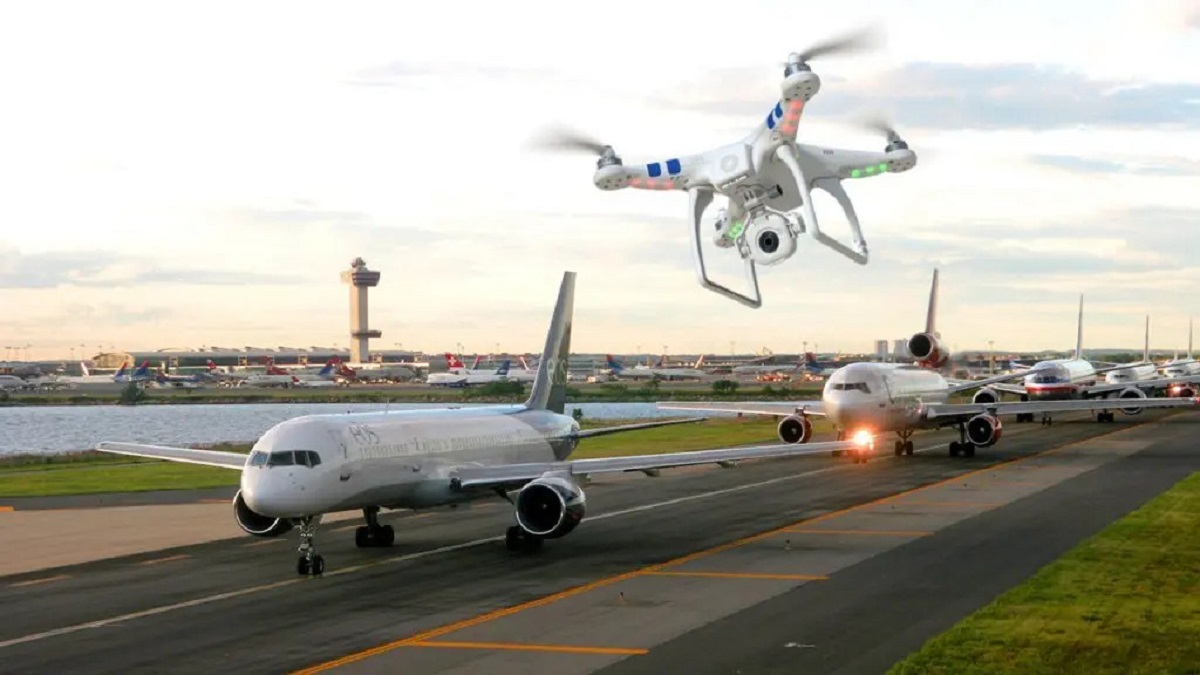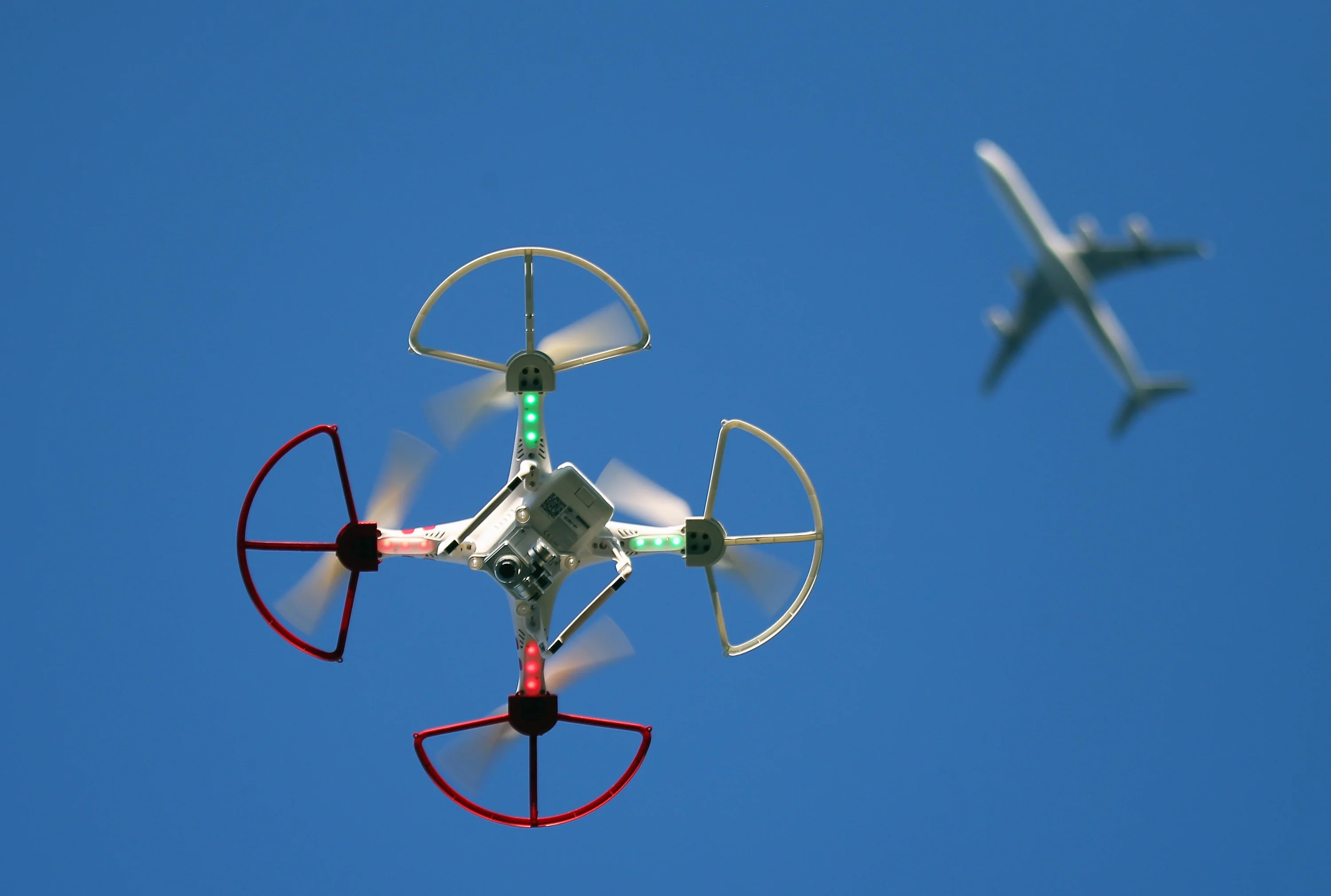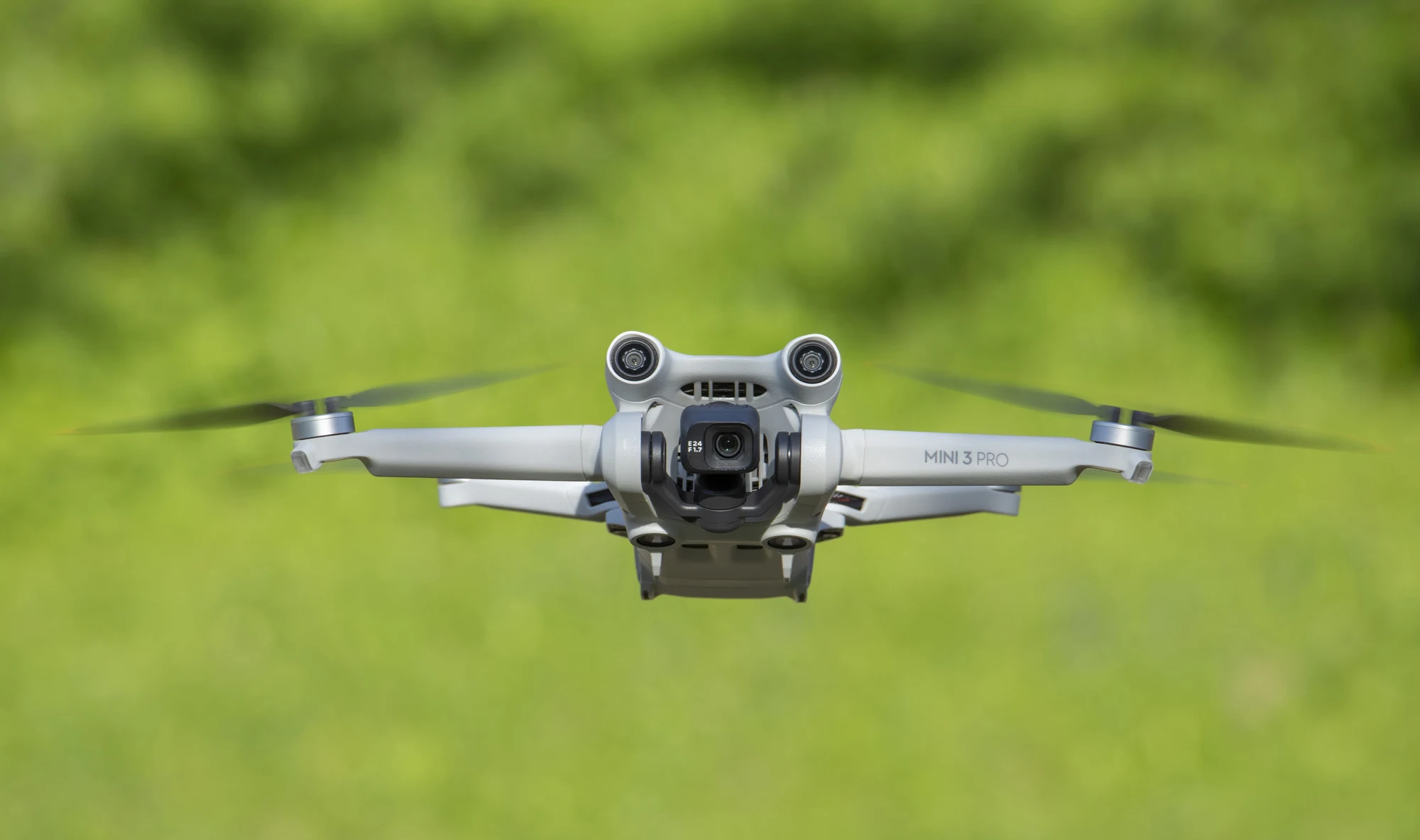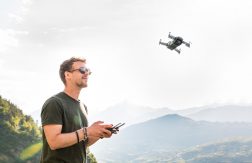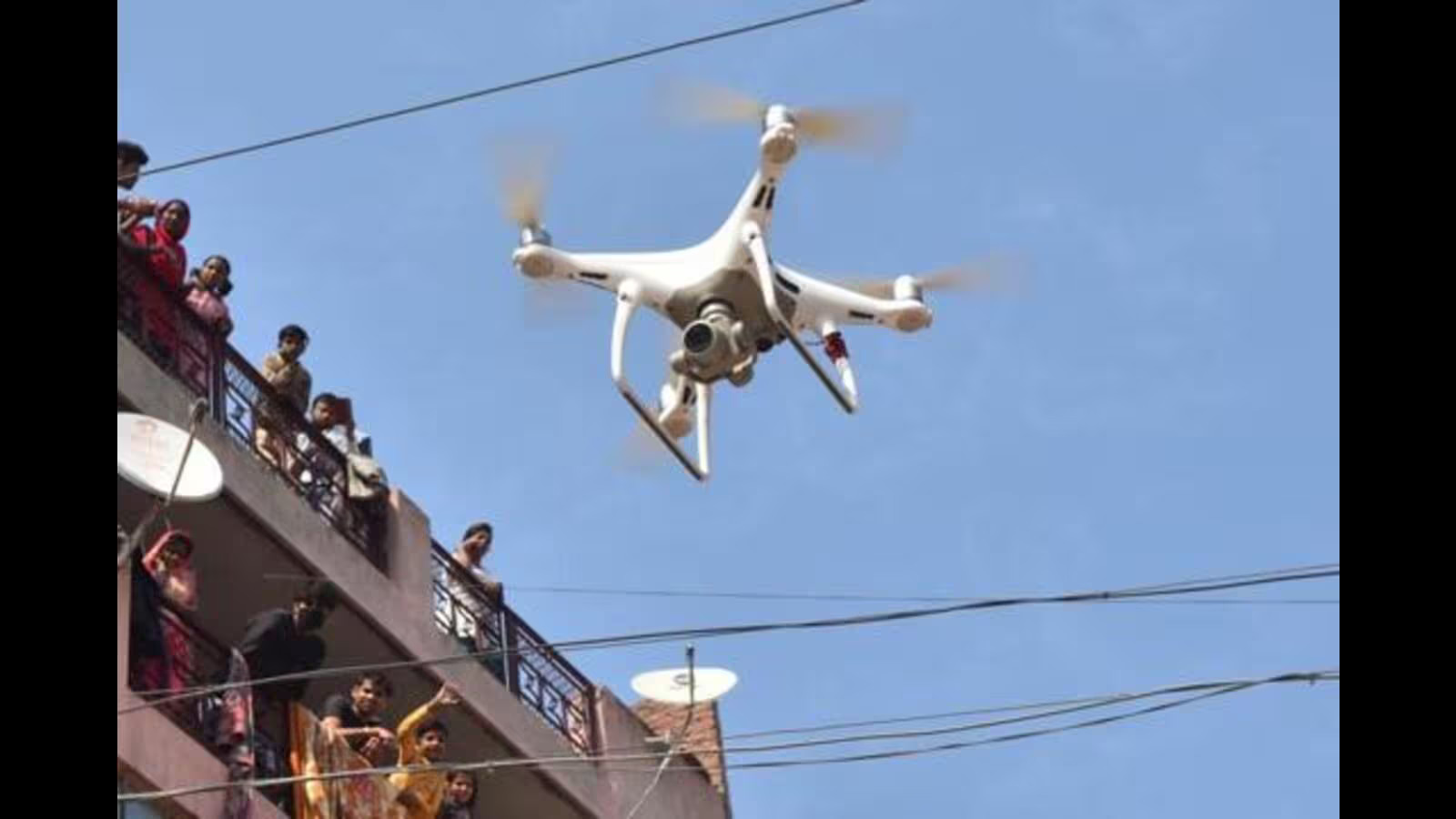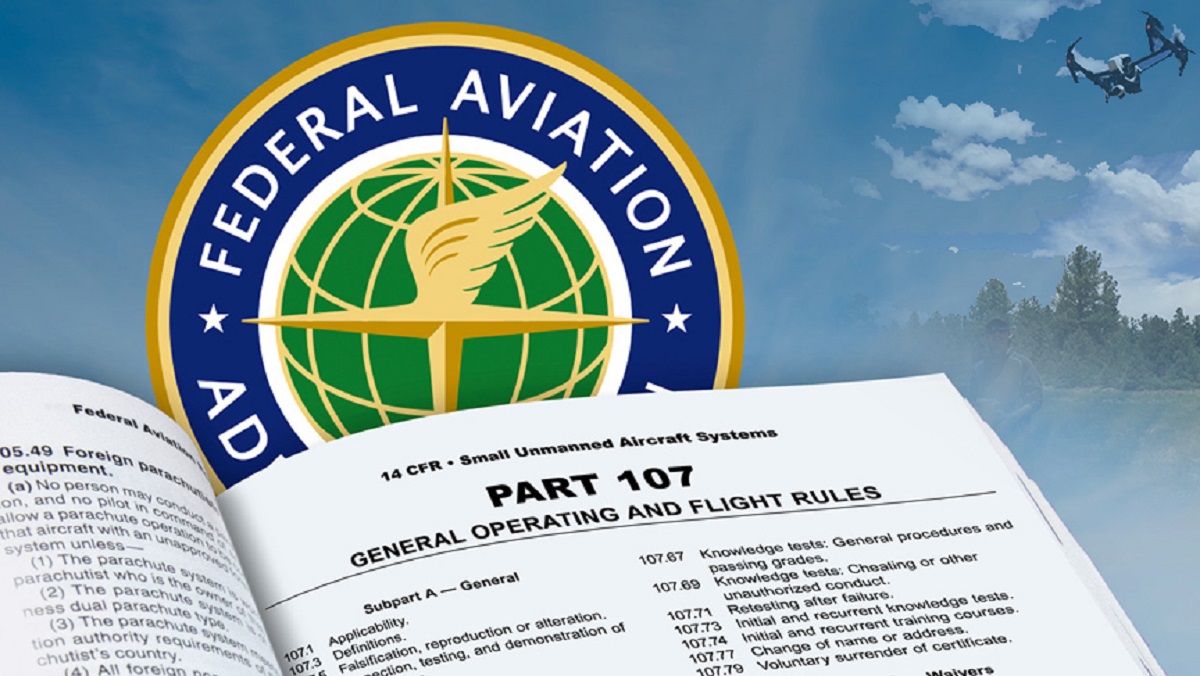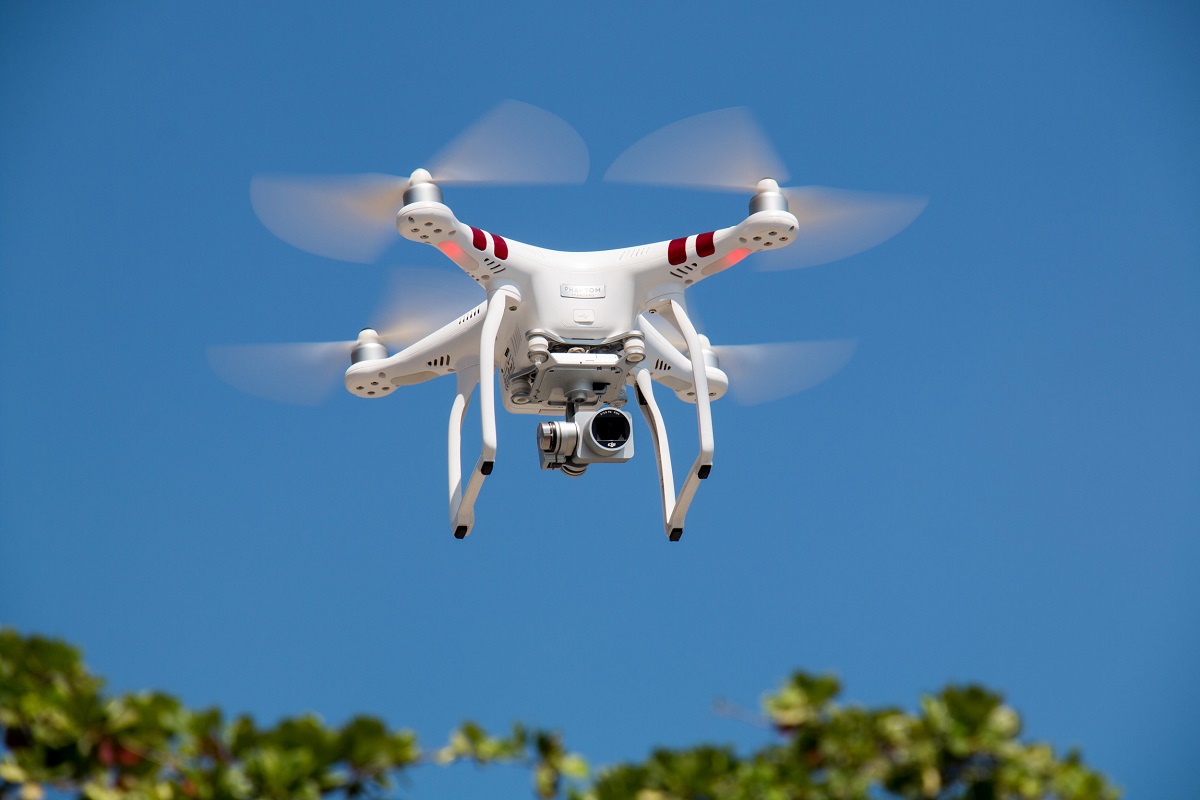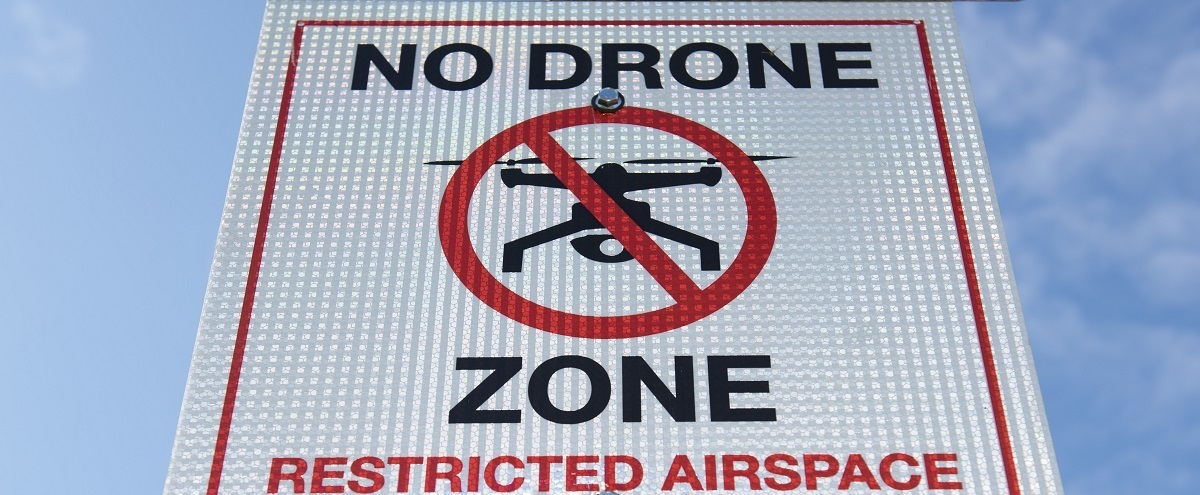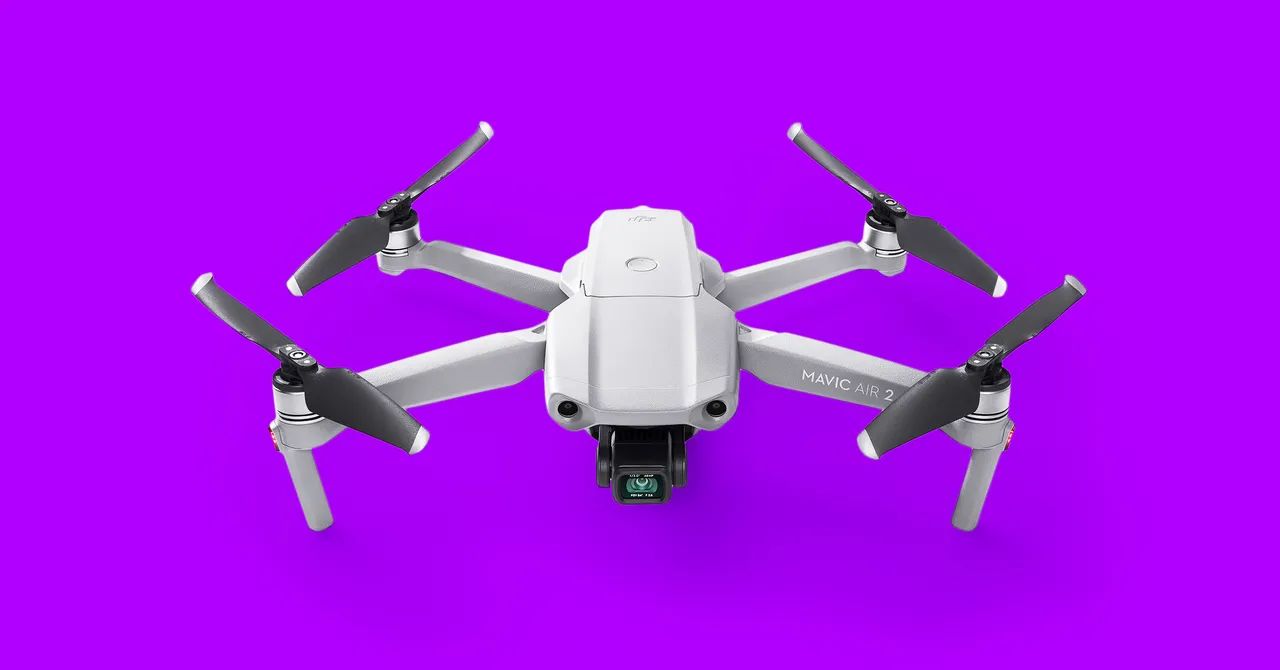Introduction
Flying a drone can be an exhilarating experience, allowing you to capture stunning aerial shots and explore new perspectives. However, when it comes to flying near airports, things can get a bit more complicated. With the increasing popularity of drones, it is important to understand the regulations and guidelines set by the Federal Aviation Administration (FAA) to ensure safe and responsible drone operation.
Drone pilots must be aware of the potential risks posed by operating drones near airports. Not only can drones interfere with the airspace used by manned aircraft, but they can also pose a threat to airport infrastructure and the safety of passengers onboard aircraft. To mitigate these risks, the FAA has established specific regulations regarding drone operation near airports and controlled airspaces.
In this article, we will explore these regulations and provide you with valuable guidance on flying drones near airports. Understanding the rules and requirements will not only keep you in compliance with the law but also ensure the safety of yourself, others, and the aircraft in the vicinity.
Understanding the Regulations
Before venturing out to fly your drone near an airport, it is crucial to have a comprehensive understanding of the regulations that govern this activity. The FAA has implemented specific guidelines to ensure the safety of manned aircraft, passengers, and airport operations.
The primary regulation to be aware of is the FAA’s Remote ID rule, which requires most drones to have a remote identification system. This system allows authorities to identify and track drones during their flight. Additionally, drone pilots are required to register their drones with the FAA and display their registration number on their aircraft.
Furthermore, drone operators are subject to airspace regulations and are advised to check the FAA’s B4UFLY mobile app or other reliable sources for real-time information regarding temporary flight restrictions, airspace questions, and other important notifications relevant to their flight location.
When it comes to flying near airports, the FAA has established specific regulations to ensure the safety of manned aircraft operations. These regulations include restrictions on flying within certain distances from airports and controlled airspaces. Violating these regulations can result in hefty fines and legal consequences.
It is important to note that the FAA’s regulations regarding drone operations near airports apply to all drones, regardless of their size or weight. Whether you are flying a small recreational drone or a larger commercial drone, you must adhere to the rules set forth by the FAA.
FAA Regulations for Flying Drones Near Airports
The FAA has implemented specific regulations to ensure the safe operation of drones near airports. These regulations are in place to prevent any potential interference with manned aircraft and to maintain the overall safety and security of airports and their surrounding airspace.
The primary rule set by the FAA is that drone operators must not fly their drones within five miles of an airport without first obtaining proper authorization. This rule applies to all airports, including small regional airports and heliports. Flying within this designated airspace without authorization is prohibited and considered a violation of federal law.
In addition to the five-mile radius, the FAA also designates specific controlled airspace around airports. This controlled airspace is typically divided into multiple classes, ranging from Class A to Class E. Drone operators need to consult maps and other resources to determine the class of airspace around a particular airport and ensure they are flying in compliance with the designated restrictions.
It is important to note that even if you are within the specified distance or outside of controlled airspace, you are still responsible for maintaining a visual line of sight with your drone at all times. This means that you must be able to see your drone with unaided vision while operating it.
Furthermore, drone operators must always yield to manned aircraft. If you spot an aircraft in your vicinity while flying your drone, it is your responsibility to maneuver away and avoid any potential conflicts. Remember, the safety of manned aircraft and their passengers is the top priority.
To ensure compliance with the regulations and to fly near airports legally, drone operators can obtain authorization through the FAA’s Low Altitude Authorization and Notification Capability (LAANC) system or by directly contacting the airport operator. This authorization process allows operators to fly in controlled airspace and can be done online or via mobile apps.
By following these regulations, obtaining proper authorization, and maintaining situational awareness, drone operators can enjoy their hobby or professional drone activities while ensuring the safety of airport operations and manned aircraft.
Understanding Airports and Controlled Airspaces
Before delving into the specifics of flying drones near airports, it is essential to have a clear understanding of airports and controlled airspaces. Airport operations and the airspace surrounding them are carefully regulated to ensure the safety and efficiency of air travel.
An airport is a designated area with facilities for the takeoff, landing, and maintenance of aircraft. Airports can vary in size and complexity, ranging from small regional airports to major international hubs. They serve as important transportation hubs, connecting people and goods across the globe.
Controlled airspace refers to areas of airspace where air traffic control (ATC) services are provided. These areas are typically established around airports to manage the flow and separation of aircraft. Controlled airspace ensures the safe operation of manned aircraft by providing organized and regulated flight paths.
Controlled airspace is classified into several classes: Class A, B, C, D, E, and G. Each class has its own defined boundaries and rules. Class A airspace, for example, is typically found at high altitudes and is regulated exclusively for instrument flight rules (IFR) operations. On the other hand, Class G airspace is uncontrolled and does not require communication with air traffic control.
When it comes to flying drones near airports, it is essential to be aware of the class of controlled airspace around the airport. This information will help determine the specific restrictions and requirements for operating a drone near that airport.
The class of controlled airspace around an airport is determined by various factors, including the volume of air traffic, airport size, and proximity to other airports. Higher density areas with significant air traffic typically have stricter regulations and more restricted airspace.
Understanding the classification and boundaries of controlled airspace is vital for drone operators to ensure compliance with the regulations. By familiarizing yourself with the airspace requirements, you can plan your drone flight accordingly and stay within the designated boundaries.
It is worth noting that controlled airspace may extend beyond the physical boundaries of the airport. This means that even if you are not directly over the airport, you might still be within controlled airspace and subject to the associated restrictions.
By acquiring knowledge of the airports and controlled airspaces in your area, you can navigate the regulations more effectively and ensure the safe and responsible operation of your drone near these crucial aviation facilities.
How Far Away Should You Stay From Airports?
When it comes to flying drones near airports, the FAA has established specific guidelines on how far away drone operators should stay to ensure the safety of manned aircraft and airport operations.
The general rule is that drone operators should not fly their drones within five miles of an airport without proper authorization. This distance is measured from the airport’s reference point, which is typically the center of the airport’s runway complex.
It is important to note that this five-mile radius applies to all airports, regardless of their size or classification. Whether it’s a small regional airport or a major international hub, the regulation remains the same.
However, it is crucial to understand that this distance is not a hard and fast rule in every scenario. Some airports, especially larger ones, might have different operational procedures and requirements. In such cases, drone operators should consult the airport’s specific guidelines or contact the airport operator for detailed information.
Moreover, the five-mile radius is not the only consideration when flying drones near airports. Drone pilots should also be aware of the controlled airspace around the airport, as this may extend beyond the five-mile radius. It is crucial to check the airspace classification and any associated restrictions to ensure compliance with the regulations.
In certain cases, drone operators may be able to fly closer to airports with proper authorization. The FAA provides a system called the Low Altitude Authorization and Notification Capability (LAANC), which allows drone operators to request authorization to fly in controlled airspace near airports. This authorization process helps ensure that drone flights are coordinated with the airport and manned aircraft, minimizing the potential risks.
It is essential to remember that the purpose of these regulations is to prioritize the safety of manned aircraft and passengers. Drone operators must respect the airspace regulations and maintain a safe distance from airports to avoid any interference or potential hazards.
By adhering to the FAA’s guidelines and seeking proper authorization, drone operators can enjoy flying their drones while ensuring the safety and integrity of airport operations.
Getting Authorization to Fly Near an Airport
If you want to fly your drone near an airport and operate within controlled airspace, it is crucial to obtain proper authorization from the appropriate authorities. The Federal Aviation Administration (FAA) has established a system called the Low Altitude Authorization and Notification Capability (LAANC) to streamline the authorization process for drone operators.
The LAANC system allows drone operators to request and obtain near real-time authorization to fly in controlled airspace near participating airports. This process can typically be done online or through mobile apps that are compatible with the LAANC system.
To get authorization, drone operators need to provide specific flight details, including the location, altitude, duration, and purpose of the drone flight. The LAANC system reviews this information and determines whether authorization can be granted based on the airspace and operational requirements.
It is important to note that not all airports participate in the LAANC system. Therefore, it is advisable to check the FAA’s official website or use approved LAANC mobile apps to verify which airports are covered by the system.
In cases where the airport is not available through the LAANC system, or for certain types of operations that fall outside the LAANC guidelines, drone operators may need to seek authorization directly from the airport operator or the FAA. This can involve a separate application process and may require additional documentation or coordination with relevant authorities.
When seeking authorization, it is essential to plan ahead and allow sufficient time for the approval process. It is recommended to submit your request well in advance, especially for complex operations or flights near busy airports.
Remember, obtaining proper authorization is not only a legal requirement but also ensures the safety of manned aircraft and airport operations. Flying without authorization near an airport can result in fines, penalties, and potential legal consequences.
By following the authorization procedures and respecting the guidelines set by the FAA and airport authorities, drone operators can enjoy flying their drones near airports while prioritizing safety and maintaining the integrity of airspace operations.
Tips for Flying Near Airports Safely
When it comes to flying drones near airports, safety should always be the top priority. To ensure the safety of manned aircraft, passengers, and airport operations, it is crucial to follow these essential tips when flying your drone near airports:
- Know the Rules: Familiarize yourself with the regulations set by the Federal Aviation Administration (FAA) regarding drone operation near airports. Understand the restrictions, airspace classifications, and specific guidelines for obtaining authorization.
- Check for Temporary Flight Restrictions (TFRs): Before every flight, check for any temporary flight restrictions in the area. The FAA’s B4UFLY mobile app and other reliable sources can provide up-to-date information on TFRs, airspace questions, and other relevant notifications.
- Respect No-Fly Zones: Avoid flying in designated no-fly zones, which include the immediate vicinity of airports and other critical areas such as military bases, national parks, and government installations. The FAA and other authorities have strict restrictions to protect these areas.
- Use the FAA’s LAANC System: If the airport is covered by the Low Altitude Authorization and Notification Capability (LAANC) system, utilize this streamlined process to obtain near real-time authorization for your drone flight in controlled airspace near the airport.
- Communicate with Airport Authorities: If the LAANC system is unavailable or you are planning complex operations, reach out to the airport operator or local FAA office for guidance and potential authorization. Engage in open and transparent communication to ensure a safe and coordinated drone operation.
- Maintain Visual Line of Sight (VLOS): Always keep your drone within your line of sight while flying, regardless of proximity to an airport. Maintaining VLOS allows you to monitor your drone and spot any potential hazards or conflicts with manned aircraft.
- Yield to Manned Aircraft: If you see an aircraft in your vicinity, immediately move your drone out of the way. Yield the right of way to ensure the safety and unhindered operation of manned aircraft.
- Be Prepared for Emergencies: Have a plan in place in case of emergencies or unforeseen situations. Be aware of emergency landing areas and take appropriate action to avoid endangering people or property on the ground.
- Fly Responsibly: Practice responsible drone operation by following general guidelines such as flying during daylight hours, avoiding flying over crowds or moving vehicles, and respecting the privacy of others.
- Stay Informed and Educated: Stay up to date with the latest drone regulations, technological advancements, and best practices for safe drone operation near airports. Attend workshops, seminars, or online courses to enhance your knowledge and skills.
By adhering to these tips, drone operators can ensure a safe and responsible experience while flying near airports. Prioritizing safety and following the guidelines help maintain the harmony between drone operations and manned aircraft, creating a safer airspace for everyone involved.
What Happens If You Violate the Regulations?
Violating the regulations set by the Federal Aviation Administration (FAA) regarding drone operation near airports can have serious consequences. The FAA takes violations of these regulations very seriously due to the potential risks they pose to manned aircraft and airport operations. Here are some possible outcomes if you violate the regulations:
- Fines and Penalties: The FAA has the authority to impose hefty fines and penalties for violating the regulations. The penalties can range from a few hundred dollars to thousands of dollars, depending on the severity of the violation and any associated damages or risks.
- Legal Consequences: Violating the regulations can lead to legal proceedings, including civil and criminal charges. Depending on the circumstances, you may face legal action, court appearances, and the potential for civil lawsuits if your actions result in property damage, personal injury, or other damages.
- Suspension or Revocation of Drone Pilot Certificate: If you hold a remote pilot certificate issued by the FAA, your certificate may be suspended or revoked if you are found to have violated the regulations. This can have long-term consequences and may affect your ability to legally operate drones in the future.
- Damage to the Reputation of Drone Community: Violating the regulations not only risks personal consequences but also damages the reputation of the entire drone community. Irresponsible and unsafe drone operations near airports can lead to increased scrutiny and stricter regulations for all drone operators, limiting the opportunities for safe and responsible drone activities.
- Negative Impact on Airport Operations: Drone operations near airports without proper authorization can disrupt airport operations, leading to delays, flight cancellations, and potential safety hazards. Such incidents can result in negative publicity for drone operators and may further strain the relationship between the drone community and aviation authorities.
It is vital to understand the seriousness of violating the regulations and to prioritize safety and compliance. Drone operators must familiarize themselves with the rules, obtain proper authorization when required, and follow best practices to ensure the safety of manned aircraft, passengers, and airport operations.
By respecting the regulations and demonstrating responsible drone operation, we can maintain a positive image for the drone community and continue to enjoy the freedom of flying drones while enhancing safety and preserving the integrity of the airspace.
Conclusion
Flying drones near airports requires a thorough understanding of the regulations and a commitment to safety. The Federal Aviation Administration (FAA) has put in place guidelines and restrictions to ensure the protection of manned aircraft, passengers, and airport operations.
By following the regulations, obtaining proper authorization, and adhering to best practices, drone operators can enjoy the thrilling experience of flying their drones near airports while maintaining a safe and responsible airspace environment.
Understanding the regulations is crucial, including the requirement to avoid flying drones within five miles of an airport without authorization. Additionally, knowing the airspace classifications and controlled airspace boundaries is essential to ensure compliance and avoid potential conflicts with manned aircraft.
Getting authorization to fly near airports is facilitated through the FAA’s Low Altitude Authorization and Notification Capability (LAANC) system, which streamlines the process for obtaining near real-time approval in controlled airspace near participating airports. For airports not covered by LAANC, direct communication with the airport operator or a separate application process may be required.
Flying safely near airports also involves practicing responsible behavior, such as maintaining visual line of sight with the drone, yielding to manned aircraft, and being aware of temporary flight restrictions and other no-fly zones.
It is essential to recognize that violating the regulations can result in fines, penalties, legal consequences, and damage to the reputation of the drone community. Drone operators must prioritize safety, adhere to the regulations, and respect the airspace around airports to maintain a positive image and allow for continued enjoyment of the drone hobby or professional activities.
By staying informed, being responsible, and following the guidelines set by the FAA and airport authorities, drone operators can ensure a safe and harmonious coexistence with manned aircraft and contribute to the overall safety and integrity of airport operations.







